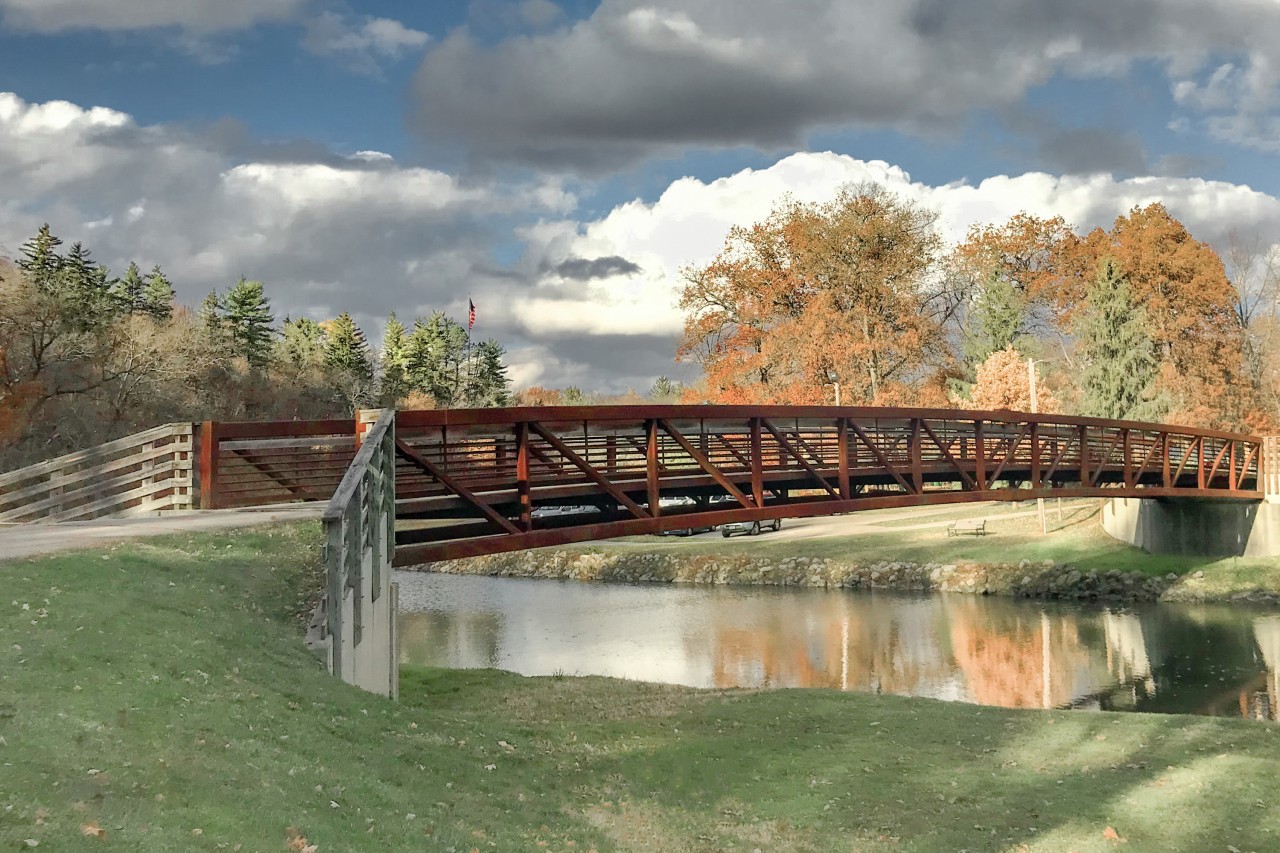Pedestrian bridge design standards
A typical pedestrian bridge is designed to carry pedestrians, bicyclists and light maintenance vehicles. A well-engineered pedestrian bridge should comply with The American Association of State Highway and Transportation Officials (AASHTO) pedestrian guide specifications and Americans with Disabilities Act (ADA) guidelines to ensure safety and durability.
While every U.S. state has its own pedestrian bridge standards, they all include the same (or similar) components. Here are some general requirements for building pedestrian bridges across Illinois, Iowa and Wisconsin.
Pedestrian bridge design standards in Illinois, Iowa and Wisconsin
Pedestrian bridges can be constructed in several ways — over divided highways, expressways, freeways and waterways, under roadways, through roadway embankments, and over and under railroad tracks. These bridges generally fall under the following four categories.
- Truss. These can be used at almost any site and should be built with a camber (upward bow) to limit the risks of a downward bow under loading. Truss bridges are a cost-efficient design with the ability to span short and moderate lengths (up to 250 feet for pedestrian use). Typical applications include bridges over roadways or large bodies of water. Simple truss bridges can also be manufactured and assembled off-site, simplifying the construction process.
- Girder (Beam). Most bridges are built with girders or beams, with the load being taken by the girders underneath the deck carrying the pedestrian traffic. For recreational or trail bridges over roadways, a girder bridge with a concrete deck and proper fencing is often used. Engineers also tend to combine multiple bridge structure types, such as concrete slab approach spans with steel girder center spans.
- Arch. These bridges are visually aesthetic but are not always a feasible option because of budget and space constraints. Arch bridges are best suited for locations where the bridge is substantially higher than the river or roadway – picture a deep gorge or canyon. With the relatively flat midwest topography, arch bridges are not typically seen in Illinois, Iowa and Wisconsin.
- Long span. Large and long pedestrian bridges include cable-stayed bridges and suspension bridges. The most famous example is the Golden Gate Bridge in San Francisco. While these bridges are aesthetically pleasing, they are expensive to construct and maintain. By incorporating innovative engineering and inspiring design, these pedestrian bridges are functional works of art. Some unique cable-stayed footbridges and suspension bridges across Illinois, Iowa and Wisconsin are listed on the National Register of Historic Places.
Common design standards for pedestrian bridges include the AASHTO Standard Specifications for Highway Bridges and the AASHTO LRFD Guide Specifications for the Design of Pedestrian Bridges. Apart from the code requirements for safety, pedestrian bridge designs should also meet aesthetic goals and performance requirements, including a minimum service life of 75 years, ease of inspection and preventive maintenance such as cleaning, removing debris, sealing deck joints and painting.
The following table highlights some general pedestrian bridge design requirements as defined by the standards in Illinois, Iowa and Wisconsin.
Please note that this is not a comprehensive list. You should consider state-specific code requirements and bridge standards while developing a pedestrian bridge design.
The pedestrian bridge design standards also require you to procure information about the site and soil conditions, conduct soil tests and geotechnical analysis, develop an abutment plan and secure permits before building a bridge. Partnering with a team of licensed transportation and structural engineers can provide you with the needed information and guidance on your bridge design project – from conception to completion.
Partner with Fehr Graham for pedestrian bridge development
At Fehr Graham, our experienced transportation and structural engineers are committed to ensuring pedestrian safety across the Midwest and beyond. From conducting traffic studies and developing pedestrian bridge designs to construction management and securing funding, we help communities build robust infrastructure that complies with local regulatory standards. We have been featured in the Roads and Bridges magazine because of our extensive work on transportation projects across Illinois, Iowa and Wisconsin.
To learn more about how Fehr Graham can help your community design bridges that comply with pedestrian bridge design standards, contact us or call 815.562.9087.
 |
As the firm’s Lead Transportation Engineer, Fehr Graham Principal Noah Carmichael, PE, leads notable, complex and high-profile transportation infrastructure engineering projects. He works closely with municipal and governmental partners on public infrastructure planning and identifies funding opportunities to support community capital investment goals. Reach him at |
Collaborative, Insightful, Results-Driven Solutions
Fehr Graham provides innovative engineering and environmental solutions to help improve the lives and communities of our customers.

